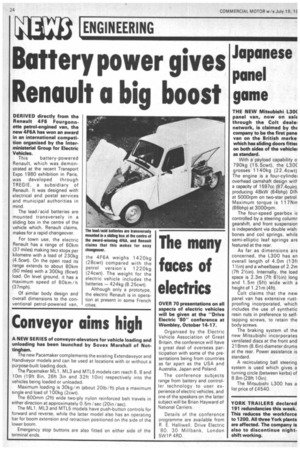Battery power gives Renault a big boost
Page 26

If you've noticed an error in this article please click here to report it so we can fix it.
DERIVED directly from the Renault 4F6 Fourgonnette petrol-engined van, the new 4F6A has won an award in an international competition organised by the Interministerial Group for Electric Vehicles.
This battery-powered Renault, which was demonstrated at the recent Transport Expo 1980 exhibition in Paris, was developed through TREGIE, a subsidiary of Renault. It was designed with electrical and postal services and municipal authorities in mind.
The lead /acid batteries are mounted transversely in a sliding box in the centre of the vehicle which, Renault claims, makes for a rapid changeover.
For town use, the electric Renault has a range of 60km (37 miles) making two stops per kilometre with a load of 230kg (4.5cwt). On the open road its range extends to about 80km (50 miles) with a 300kg (6cwt) load. On level ground, it has a maximum speed of 60km h (37mph).
Of similar body design and overall dimensions to the conventional petrol-powered van, the 4F6A weighs 1420kg (28cw1) compared with the petrol version's 1220kg (24cwt). The weight for the electric vehicle includes the batteries — 424kg (8.25cwt).
Although only a prototype, the electric Renault is in operation at present in some French cities.








































































































































